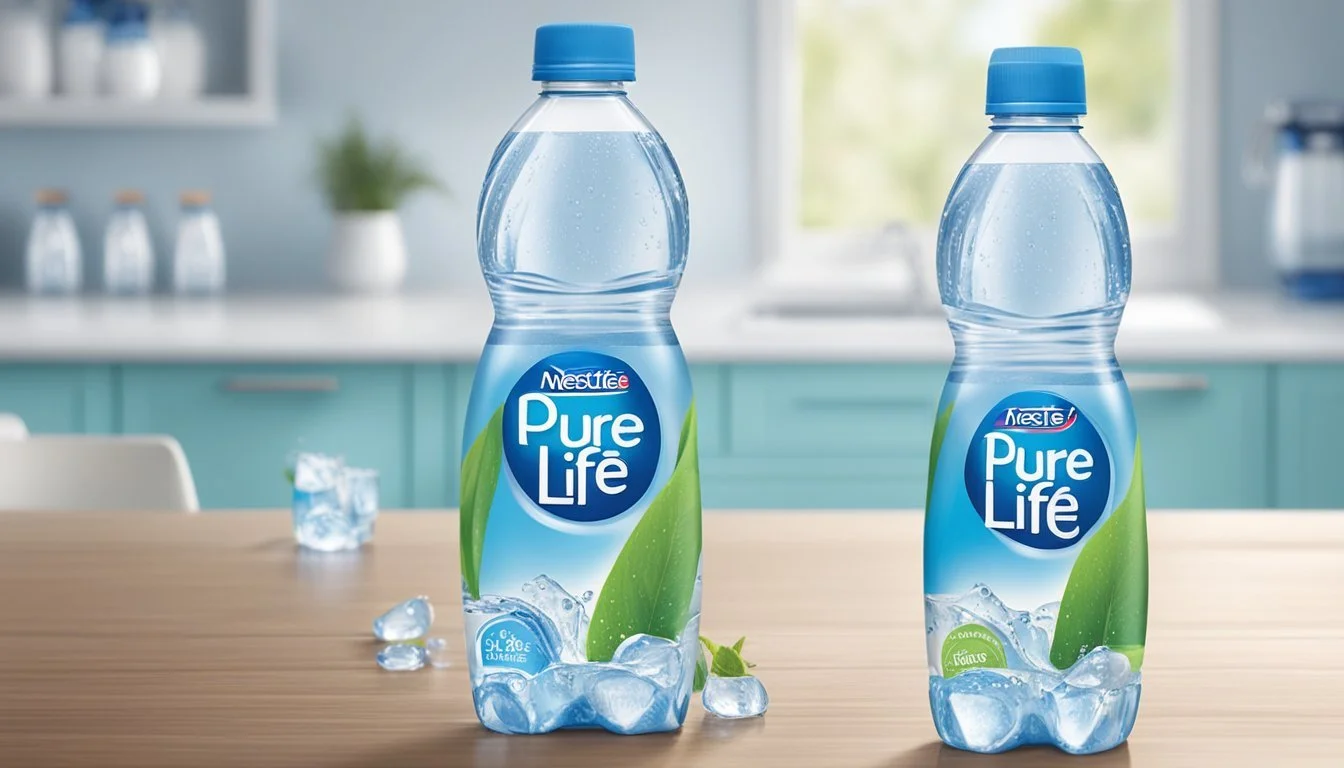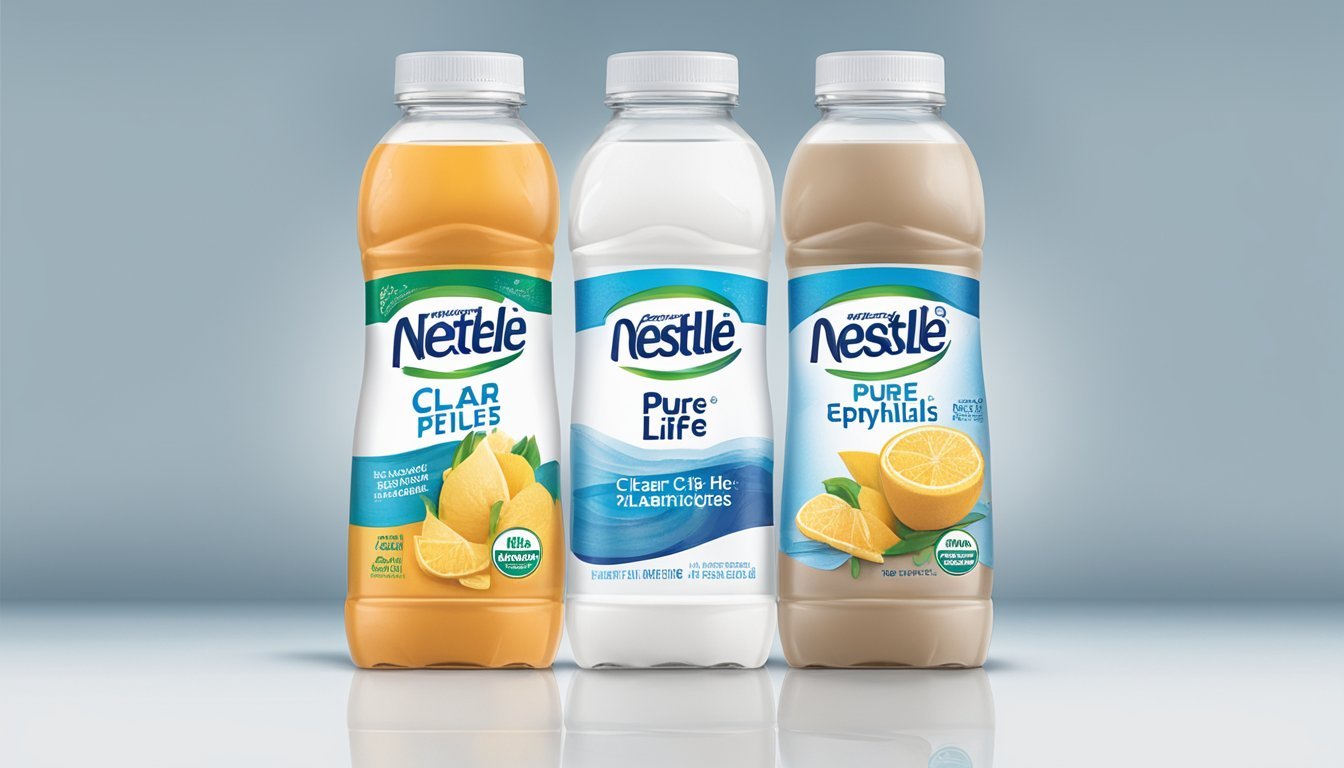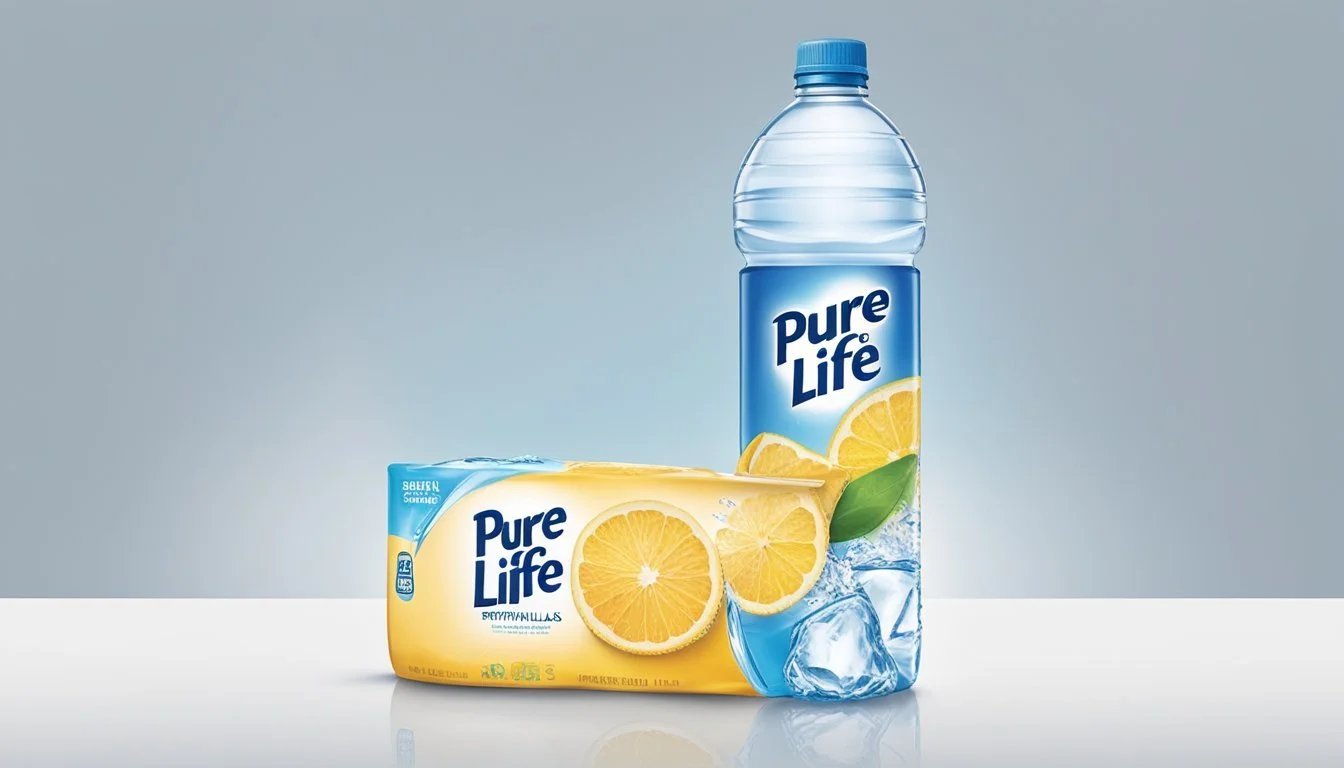Nestlé Pure Life vs. Zephyrhills
Comparing Quality and Taste
In the realm of bottled water, consumers are often faced with an array of choices, each brand claiming superiority in purity, taste, and health benefits. Nestlé Pure Life and Zephyrhills represent two prominent brands within this competitive market. Nestlé Pure Life, a globally recognized brand, boasts a filtration process that includes demineralization and added minerals for taste. On the other hand, Zephyrhills is known for sourcing its water from Florida's natural springs, offering a regional option for those in the United States.
The discussion surrounding which bottled water is better is not solely about taste preference; it involves a broader consideration of factors such as sourcing, processing techniques, and environmental impact. Consumers consider the brand's reputation, transparency in their processing methods, and the overall quality of the water they are consuming. Nestlé Pure Life positions itself as providing consistently safe and pure water, whereas Zephyrhills highlights its local spring sources and natural mineral content.
As the debate between Nestlé Pure Life and Zephyrhills continues, it is crucial to dissect the particulars that define each brand. While Nestlé Pure Life's extensive treatment process is designed to ensure uniform quality and taste across various regions, Zephyrhills’ focus is on delivering a natural and unadulterated product from a specific geographic locale. Ultimately, the choice between the two may come down to individual preferences regarding the origin and treatment of their water.
Overview of Bottled Water Industry
The bottled water industry has observed a substantial expansion over the years, evolving into a diverse market with numerous brands competing globally. Consumers' demand for convenience and perceived purity drives this market, with an array of options ranging from spring waters to mineral-enriched types.
History and Growth
The origins of bottled water date back to the early days when natural springs were sought for their purported health benefits. By the late 20th century, advancements in bottling processes and an increased focus on health and wellness accelerated the industry's expansion. The global bottled water market was estimated at around USD 303.95 billion in 2022 and is expected to grow further with a compound annual growth rate (CAGR) of approximately 5.9% from 2023 to 2030.
Major Brands
The landscape of the bottled water industry is dominated by several major players, each with its own segment of the market:
Nestlé Waters: Leading the charge as one of the largest bottled water corporations worldwide, offering Nestlé Pure Life, a widely-distributed product known for its accessibility and consistent quality.
PepsiCo and Coca-Cola: Both major soda manufacturers also own prominent bottled water brands, with Aquafina and Dasani, respectively, serving as their standard-bearers in the marketplace.
Premium Brands: These include Fiji, known for its artesian water; Voss, originating from Norway with a low pH and luxury branding; and Evian, sourced from the French Alps.
Eco-Friendly and Artisanal Options: Brands such as Icelandic Glacial and Mountain Valley Spring Water cater to niches in the market, with emphasis on sustainability and unique source locations.
Other notable brands that contribute to the industry's diversity include Aqua, Poland Spring, Ice Mountain, Acqua Panna, Perrier, Penta, Glaceau Smartwater, Ozarka, Eternal Water, Ethos Water, and Core Hydration. Many of these brands are backed by extensive marketing campaigns and sometimes partnerships with sports drinks like Gatorade, also owned by PepsiCo.
Types of Bottled Water
Consumers choose bottled water for its purity, mineral content, taste, and added health benefits. The market offers a variety of types, each with its unique sources and enhancements.
Spring Water
Spring water is sourced directly from an aquifer and often bottled at the site where it flows to the surface or is tapped through a borehole. Brands like Zephyrhills offer spring water that is naturally filtered and may contain a variety of minerals. It typically has a balanced pH level and is valued for its purity and natural taste.
Purified Water
Purified water, like Nestlé Pure Life, undergoes processes such as reverse osmosis, distillation, or deionization to remove impurities and total dissolved solids (TDS). This purification process ensures that the water meets strict safety standards. The result is water that is free from contaminants found in ordinary tap water.
Mineral Water
Mineral water contains a higher content of minerals and trace elements such as calcium, magnesium, and potassium, which are beneficial for hydration and overall health. It is sourced from geologically and physically protected underground water sources. The TDS levels in mineral water can contribute to its taste profile.
Alkaline Water
Alkaline water has a higher pH balance compared to regular drinking water. This is often due to the presence of alkalizing compounds, such as calcium, silica, potassium, magnesium, and bicarbonate. Alkaline water is often sought for its potential health benefits, including neutralizing acid in the bloodstream, which proponents claim can improve metabolism and increase energy.
Flavored and Functional Water
This category includes water enhanced with flavors, electrolytes, or antioxidants like electron water. Brands might add natural or artificial flavors to provide a tasteful alternative to plain water. Functional waters are additionally infused with supplements to promote health and improve hydration. Examples include Fiji Water, which is a popular brand known for its high electrolyte content and smooth taste.
Nestlé Pure Life
Nestlé Pure Life is known for its extensive distillation process and worldwide brand presence, offering consumers a range of bottled water products. The brand emphasizes both the production process and the quality assurance of its sources.
Production Process
The production of Nestlé Pure Life water involves a multi-step process. Initially, the water is put through microfiltration to remove particles and impurities. Subsequently, reverse osmosis and additional filtration methods are employed to ensure purity. This meticulous process is designed to meet or exceed government standards for drinking water.
Source and Quality Assurance
Nestlé sources water for Pure Life from various locations, which undergoes strict quality assurance tests. Water quality and pH levels are monitored to meet their internal standards, which may be more stringent than local regulatory requirements. Hydration and safety remain key priorities for Nestlé, with each source tested for contaminants like plastic particles, ensuring the water is safe for consumption.
Brand Offerings
Nestlé Pure Life offers a variety of products tailored to consumer needs. Their portfolio includes:
Still and Sparkling Water: Catering to diverse preferences.
Flavored Water: For those seeking a hint of taste.
Sizes: From small, portable bottles to larger multi-serve formats.
All products are packaged in plastic water bottles, with efforts to incorporate recycled materials and reduce the environmental impact. Labels and packaging include information on origin, taste, and mineral content, with transparent communication being a critical aspect of their customer relations.
Zephyrhills Analysis
Zephyrhills is a brand that boasts its origins and filtration processes as key selling points. It positions itself as offering water of high purity originating from Florida's natural springs.
Production and Filtration
Zephyrhills Natural Spring Water undergoes a meticulous filtration process. Natural filtration occurs as the water percolates through layers of rock before being harvested, and Zephyrhills further employs sophisticated filtration methods to meet stringent quality standards.
Source of Zephyrhills Water
The Zephyrhills brand draws its water from several springs located within Florida, primarily in the Tampa Bay region. These sources include Crystal Springs, one of Florida's most abundant springs. The springs are replenished by the Floridan aquifer, which is a vast underground layer of porous rock that holds a significant amount of the region's groundwater.
Brand Portfolio
Zephyrhills is part of a larger portfolio of bottled water brands owned by Nestlé, which includes names like Deer Park and Ozarka. Each brand is typically geographically targeted; Zephyrhills, for example, is mainly distributed within Florida, capitalizing on local resonance and sourcing.
Comparative Analysis
In comparing Nestlé Pure Life and Zephyrhills bottled water, key factors such as taste profile, nutritional content, environmental considerations, and price accessibility play crucial roles in determining the preferred choice for consumers.
Taste Profile Comparison
Nestlé Pure Life has often been characterized by its neutral taste, potentially due to its purification process, which includes reverse osmosis and demineralization. Zephyrhills, sourced from Florida springs, is reputed for a fresh taste that many consumers find appealing, reflecting the natural minerals present which lend character to the water compared to other brands like Dasani or Fiji Natural Artesian Water.
Nutritional Content
Bottled water isn't typically lauded for its nutritional value, but impurity levels and mineral content can vary. Nestlé Pure Life is purified and has a consistent mineral content added back for taste, whereas Zephyrhills is naturally mineral-rich. Neither water should contain sugars, calories, or artificial flavors found in some other beverages.
Component Nestlé Pure Life Zephyrhills Total Dissolved Solids (TDS) Low (consistent) Varies (naturally higher) pH Level Neutral (~7.0) Slightly Alkaline Minerals Added in consistent amounts Naturally occurring
Packaging and Environmental Considerations
Packaging is a significant factor concerning environmental impact. Both brands primarily use plastic bottles, but Nestlé Pure Life offers some sizes in recycled plastic known as rPET. Zephyrhills boasts of its "Eco-Shape" bottle, which uses less plastic. However, the environmental impact of plastic water bottles, BPA presence in some plastics, and the contrasting sustainability of alternatives like glass bottles or boxed water remain consumer considerations. Neither brand currently offers a glass bottle option, affecting those looking to avoid plastic altogether.
Price Point and Accessibility
In terms of cost and availability, both brands are competitively priced and widely accessible across various retail venues. Nestlé Pure Life benefits from the distribution might of the world's largest bottled water company, ensuring broad reach. Zephyrhills, while well-distributed, particularly in the Southeastern U.S., may not match Nestlé's extensive network.
Brand Average Retail Price Accessibility Nestlé Pure Life $$ Widely available Zephyrhills $$ Regional availability
Both brands offer a cost-effective hydrating solution, with Nestlé Pure Life having a potentially wider reach while Zephyrhills caters to a market seeking water with a natural taste from a specific source.
Health and Hydration
In comparing Nestlé Pure Life and Zephyrhills bottled waters, understanding their contributions to hydration, electrolyte balance, and adherence to safety standards is crucial for assessing their impact on health.
Hydration and Body Health
Hydration is essential for maintaining bodily functions, and both Nestlé Pure Life and Zephyrhills aim to provide this crucial benefit. Water assists in regulating body temperature, transporting nutrients, and excreting waste. A person's hydration needs can be met by drinking these bottled waters, as they are free from calories and sugar, unlike many other beverages.
Electrolytes and pH Balance
Electrolytes, such as sodium and potassium, are vital for fluid balance and nerve signal transmission. Nestlé Pure Life is enhanced with a light blend of minerals for taste, while Zephyrhills is natural spring water containing naturally occurring minerals. The ideal pH balance for drinking water falls between 6.5 and 8.5. Nestlé Pure Life ensures a consistent pH within this range, and Zephyrhills' pH can vary slightly since it is sourced from springs.
Nestlé Pure Life:
Electrolytes: Added for taste
pH: Controlled and consistent
Zephyrhills:
Electrolytes: Naturally occurring
pH: Subject to natural variation
Water Contaminants and Safety Standards
Both brands comply with the FDA regulations for water safety, which require monitoring for contaminants such as microbial pathogens and total dissolved solids (TDS). Microplastics can be a concern in bottled water, but both Nestlé Pure Life and Zephyrhills maintain that their bottling processes are stringent to minimize contamination.
Safety Standards:
Nestlé Pure Life: Multiple-stage filtration and quality checks
Zephyrhills: Sourced from protected springs, with quality controls
Both Nestlé Pure Life and Zephyrhills strive to provide safe and hydrating bottled water, containing the necessary electrolyte content and adhering to the pH balance beneficial for health without compromising on safety and quality standards.
Consumer Insights
In assessing Nestlé Pure Life and Zephyrhills, consumers weigh brand perception, environmental and ethical considerations, as well as trends in water consumption to make informed decisions.
Brand Perceptions
Nestlé Pure Life, despite belonging to the world's largest bottled water company, Nestlé Waters, often garners an average rating from consumers. It's recognized for being widely available but doesn't stand out among connoisseurs looking for a premium water experience.
Zephyrhills, sourced from natural springs in Florida, tends to have a favorable perception. Its regional identity contributes to its positive image, and consumers often regard it as a reliable provider of clean drinking water.
Environmental and Ethical Concerns
Nestlé has faced scrutiny for its environmental impact, with criticisms over the sourcing and bottling process. Concerns have been voiced about the presence of microplastics and CO2 emissions associated with the production and transportation of bottled water.
Zephyrhills, as part of the larger Nestlé group since the acquisition by BlueTriton Brands, shares similar environmental concerns. Efforts to address these issues include using recycled materials and pledges to decrease carbon footprint, but skepticism remains among environmentally conscious consumers.
Consumer Preferences and Trends
Preferences trend towards brands that offer clean drinking water without compromising on environmental values. There's a growing trend of consumers who opt for tap water over bottled, when the tap water's safety and quality allow, to minimize environmental impact.
Creativity in packaging and marketing, such as using plant-based plastics, has kept Zephyrhills relevant. However, consumer trends show a clear favor towards products that reduce plastic use and present a lower carbon footprint, leading some to choose regional brands that align with these values, potentially benefiting Zephyrhills in its local market over Nestlé Pure Life.
Conclusion
When comparing Nestlé Pure Life and Zephyrhills, consumers should consider several aspects such as taste, hydration efficiency, environmental impact, and the source of the water.
Nestlé Pure Life is known for its widespread availability and is a product of the world's largest bottled water company. It offers a consistent taste and reliable hydration, though some criticize it for being average in flavor and question its environmental sustainability.
Zephyrhills, on the other hand, is a brand that sources its water from Florida springs. Its regional focus means that it may have a smaller environmental footprint in terms of transportation if consumed locally. Customers often appreciate Zephyrhills for its more distinctive and natural taste coming from the spring water source.
Factor Nestlé Pure Life Zephyrhills Taste Average flavor; added minerals for consistency Natural spring water taste Hydration Effective Effective Environmental Challenges due to global distribution Potentially lower impact if consumed locally Source Varied, with added minerals Florida springs
In conclusion, both brands provide clean drinking water solutions for individuals seeking to stay hydrated. The choice between Nestlé Pure Life and Zephyrhills may ultimately come down to personal preference, availability, and a consumer's prioritization of environmental concerns. Those valuing a more natural taste and a local source may lean towards Zephyrhills, while those who prioritize widespread availability and a consistent product might prefer Nestlé Pure Life.










